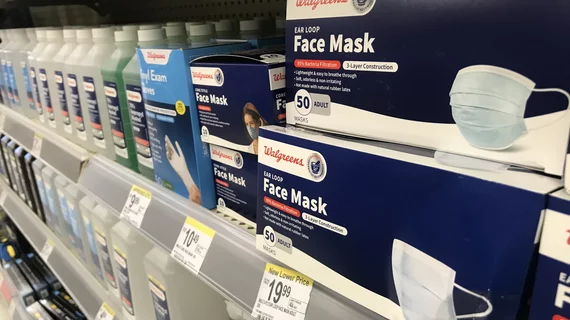FDA authorizes first at-home flu and COVID-19 test
The Food and Drug Administration (FDA) has approved the first over-the-counter (OTC) at-home diagnostic test for influenza and COVID-19. The test specifically can detect and differentiate between influenza A and B and the SARS-Cov-2 virus that causes COVID-19.
The single-use at-home test, which was approved under the emergency use authorization (EUA), gives results in about 30 minutes. Users self collect nasal swab samples for the Lucira COVID-19 & Flu Home Test. The test, which is available without a prescription, is intended for individuals with signs and symptoms consistent with a respiratory tract infection, including COVID-19.
“Today’s authorization of the first OTC test that can detect Influenza A and B, along with SARS-CoV-2, is a major milestone in bringing greater consumer access to diagnostic tests that can be performed entirely at home,” Jeff Shuren, MD, JD, director of the FDA’s Center for Devices and Radiological Health, said in a statement. “The FDA strongly supports innovation in test development, and we are eager to continue advancing greater access to at-home infectious disease testing to best support public health needs. We remain committed to working with test developers to support the shared goal of getting more accurate and reliable tests to Americans who need them.”
The newly approved test comes as the United States is still grappling with the COVID-19 pandemic, with more than 236,000 new weekly cases and more than 2,400 new deaths per week attributed to COVID-19 as of Feb. 24, according to the Centers for Disease Control and Prevention (CDC). The Biden administration recently announced the public health emergency (PHE) declared at the start of the pandemic will end in May.
According to the FDA, users who use the at-home test should report all results obtained to their healthcare provider for public health reporting and to receive medical care. The agency stated that the test is very effective for individuals with symptoms.
“The Lucira COVID-19 & Flu Home Test correctly identified 99.3% of negative and 90.1% of positive Influenza A samples, 100% of negative and 88.3% of positive COVID-19 samples and 99.9% of negative Influenza B samples,” the FDA said.
However, the agency also noted there is a risk of false positive and false negative tests, as there is with all at-home tests. Therefore, those who test positive for either the flu or COVID-19 should take precautions to avoid spreading the viruses and seek follow-up care with their physicians or healthcare provider, as additional testing may be required. In addition, those who test negative but continue to have respiratory illness symptoms should also seek followup care with their healthcare provider.

